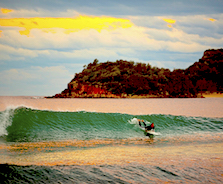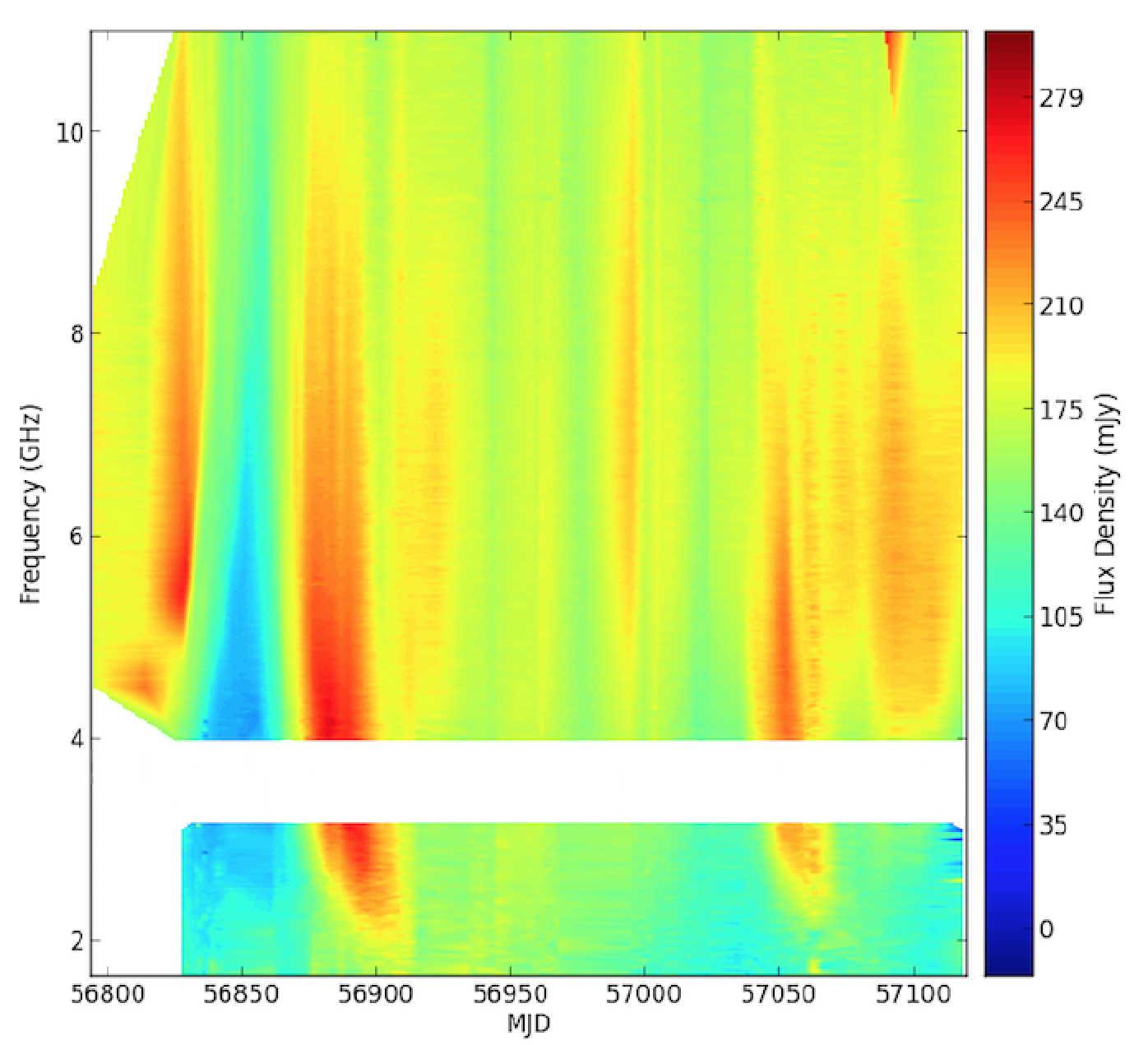 Welcome
Welcome
Manly Astrophysics is a scientific institute dedicated to research in astronomy. We focus on understanding astronomical data in terms of the underlying physical processes.
Our work is explained in the "Projects" section. Some of the illustrations use CDFs, so you'll need the CDF-reader. It's free. Please download it from here:

What’s new on this site?
News & Views & Events
I'm happy to be able to report that there's been some interesting events in the radio sky, lately, for any hams who're tuning in. Actually, tuning your radio receiver is not necessary, as has been shown by Keith Bannister and his team from CSIRO's Astrophysics and Space Science Division, working with Manly Astrophysics: if you look at a broad range of radio frequencies at the same time, then a small number of sources stand out because of their funky "radio-colour" combinations. These sources are typically the ones that are varying with time, often in spectacular fashion.
A great deal of variability in the radio sky is caused by radio twinkling, also known as scintillation or lensing, due to ionised interstellar gas which magnifies or demagnifies sources, making them appear brighter or fainter. In detail the behaviour can be very complicated, and no two radio sources twinkle in exactly the same way. But a common aspect is that the twinkling alters the radio colours, because at any instant the magnification is a strong function of radio frequency.
Every radio source twinkles, but for most it's a small effect. So when we find sources with weird spectra, it often means that there's a big lump (or lumps) of ionised gas between us and the source, acting as a strong radio-lens. That was the logic used by Keith & Co. in a new approach to studying the lumpiness of interstellar gas. Only recently has it become possible to work in this way, now that radio telescopes such as the Australia Telescope Compact Array are able to record a wide range of radio frequencies simultaneously. The first lensing event discovered using this technique was reported in January 2016 in the journal Science (see here).
The most exciting aspect of this approach is that we're now able to discover radio lensing events in real time: we survey a large number of radio sources and look for weird colour combinations. Any interesting sources can then be watched intensively to record the lensing event in detail. Here's a picture of the "dynamic spectrum" of our first event, showing the apparent brightness of the source, across a range of radio frequencies, as a function of time:

The brightness of radio source PKS1939-315, as a function of radio frequency, in GHz (vertical axis), and time, in days (horizontal axis = "Modified Julian Date"). Observations made with the Australia Telescope Compact Array, and reported by Bannister et al (2016, Science, 351, 354). The brightness ("Flux Density") at each time and frequency is indicated by the false colour representation, as shown in the bar on the right-hand side. No data were taken at radio frequencies between 3.2 and 4 GHz. This event was discovered during observations on MJD=56820, at which time PKS1939-315 showed a spectrum that was normal except for a sharp upturn below 4.5 GHz.
With the beautiful data shown above we were able to determine the profile of the ionised gas cloud which was responsible for the event (see Tuntsov et al 2016). In turn, that allowed us to exclude one of the models which had been proposed to explain the phenomenon. But we'll need much more information if we're to understand the physics of the lenses -- see the Projects page on Scintillations. The ongoing ATESE project uses the Australia Telescope Compact Array to survey roughly 1000 radio quasars on a monthly cadence, and as a result we've found more of these radio lensing events. Our modelling techniques and are developing in parallel, and we hope to gain fresh insights and understanding.
MW 13th April 2016
